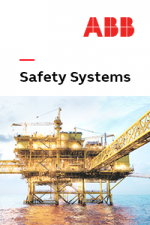- Russian Dam Disaster: Assessing the Cost of Failed Safety Practices
- Analyzing the Human Element of the Russia Dam Disaster
- Turbine 2: How a Track Record of Uncertainty Led to Disaster
- Russian Dam Disaster: A Reckoning for Bypassed Safety
- When Running People Past Their Breaking Point Effects Safety: The Bayer Crop Science Incid…
Turbine 2: How a Track Record of Uncertainty Led to Disaster
Turbine 2 at the Sayano–Shushenskaya hydroelectric power station in Khakassia, Russia, had experienced a history of vibration issues that, over the years, prompted plant operators to shut it down for a series of repairs.
After being compelled to once again shut the turbine down in July of 2009, operators were pressured to bring it back online August 16 of that same year. In this case, help was needed to offset a drop in power caused by the failure of a power plant in Bratsk some 500 miles away.
Had the operators reviewed the history of that particular turbine unit (Turbine 2) prior to authorizing the firing up of the turbine, they certainly would have pursued a different plan of attack. However, in this instance, caution gave way to an impulsive decision under duress to bring the flawed turbine back into service.
That fateful decision led to disaster. On August 17, 2009, at 8:13 a.m., the Sayano–Shushenskaya hydroelectric power station in Khakassia, Russia, suffered the catastrophic event of Turbine 2 breaking violently apart. Within minutes of the accident, 75 people were dead and 40 more injured. The turbine and engine rooms were flooded, and a collapsed ceiling left 9 of 10 turbines damaged or destroyed.
Shortly after installation in 1979, Turbine 2 had experienced problems resulting from defects in seals and shaft vibrations. Between 1980 to 1983, the turbine continued to experience numerous problems involving seals, turbine shaft vibrations and bearings.
In March 2000, operators performed a complete overhaul of Turbine 2 and discovered both 12 mm cavities and multiple cracks of up to 130 mm in length. Despite a series of repairs, Turbine 2 continued to experience problems which resulted in further repairs in 2005. From January through March 2009, the turbine also underwent scheduled maintenance.
During the maintenance period, more cracks and cavities were discovered (caused by long periods of operation) and the turbine blades were welded to address these issues. In fact, the turbine was the first and only one of the 10 in the station equipped with a new electro-hydraulic regulator to better control its rotational speed. On March 16, operators resynchronized the turbine to the grid. Although vibrations remained high, they did not exceed specifications. The vibrations steadily increased between April and July and began exceeding the specifications. As a result, operators decided to take the unit offline. However, on August 16, despite the shaky history of the turbine, they felt compelled to start the unit back up when informed that the Bratsk power plant was now out of commission.
Turbine 2 restarted on August 16 at 11:14 p.m. At 11:44 p.m., the turbine was running at a full load of 600 MW. During the night, its load varied between 10 and 610 MW. At the time of the 8:13 a.m. accident, its load was 475 MW and water consumption was at 256 m3/s (9,000 cu ft/s). Vibration of the bearing was 0.84 millimeters (0.033 in), which exceeded the values of the other turbines by a factor of more than 4X.
The St. Petersburg metal works company that manufactured the turbine, LMZ, had estimated the lifespan of the turbine at 30 years. Turbine 2’s age on August 17 was 29 years and 10 months.
The official report published by Russia’s Federal Environmental, Technological and Atomic Supervisory Service (Rostekhnadzor), listed the primary cause of the accident as excessive turbine vibrations which led to the fatigue damage of the mountings of Turbine 2, which included the mountings used to cover and contain the turbine. It was also determined that, at the time of the accident, at least six nuts were missing from the bolts securing the turbine cover. Of the 49 bolts that were recovered during the investigation, 41 showed fatigue cracks. On eight of the bolts examined, the fatigue damage area exceeded 90 percent of the total cross-sectional area.
To better understand how some of the various mistakes that occurred over time should have been addressed and prevented, click here (links to the other blogs in the series). To learn more about steps to take for ensuring better plant and control systems process safety click here.


